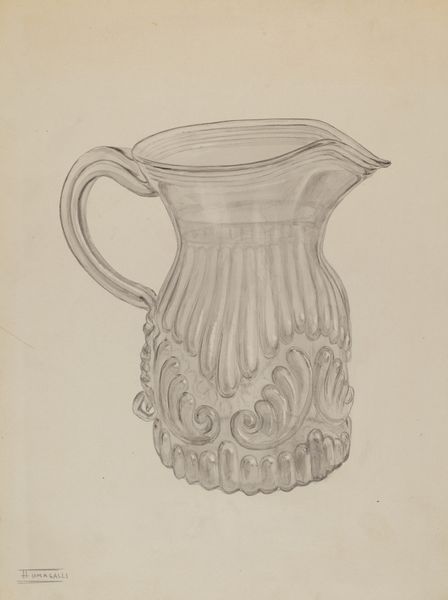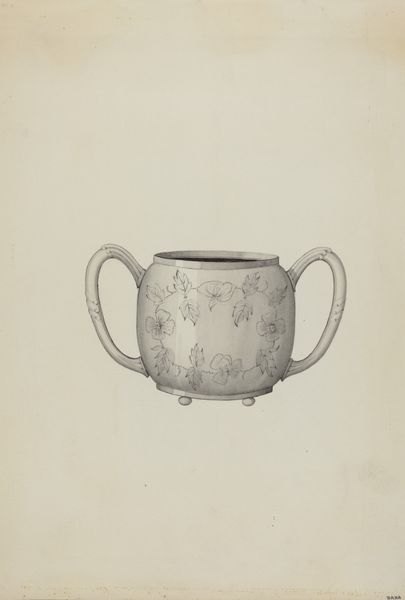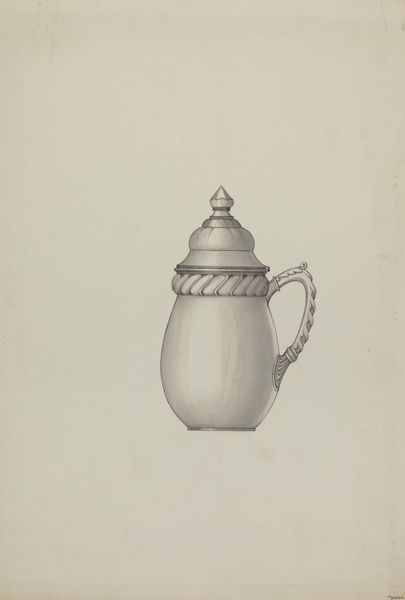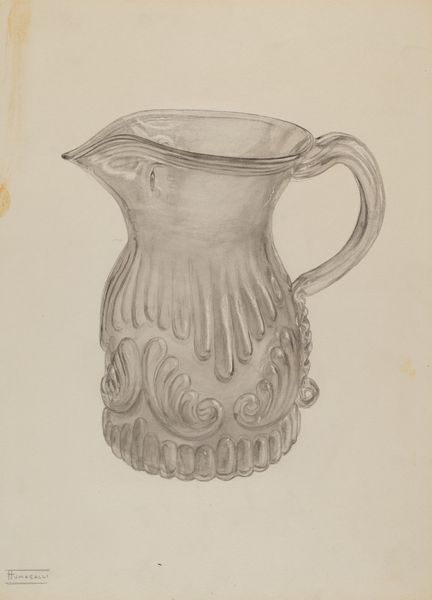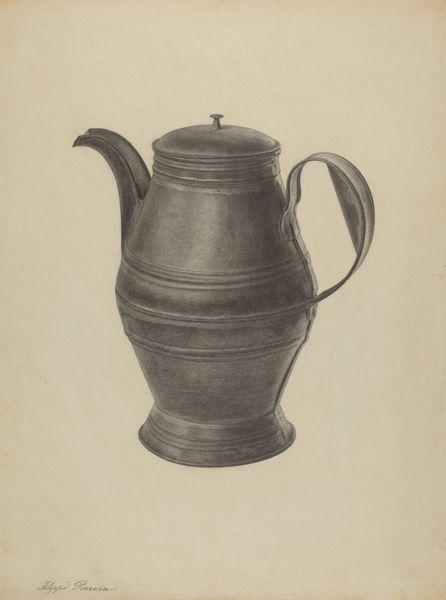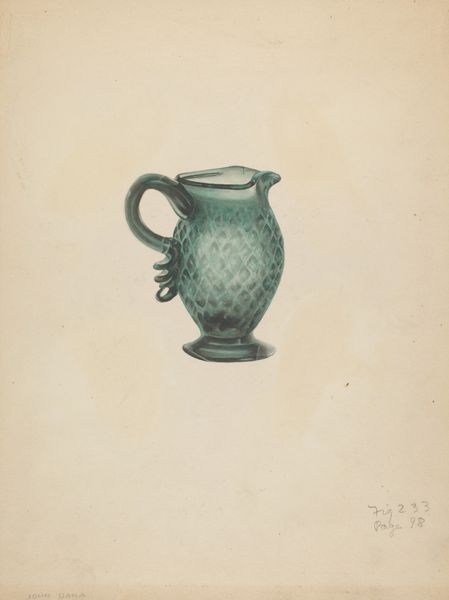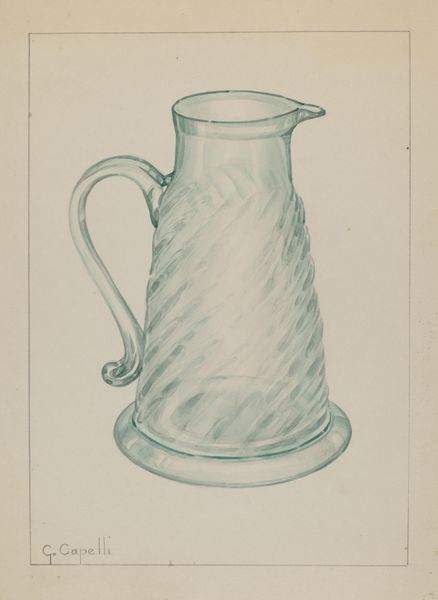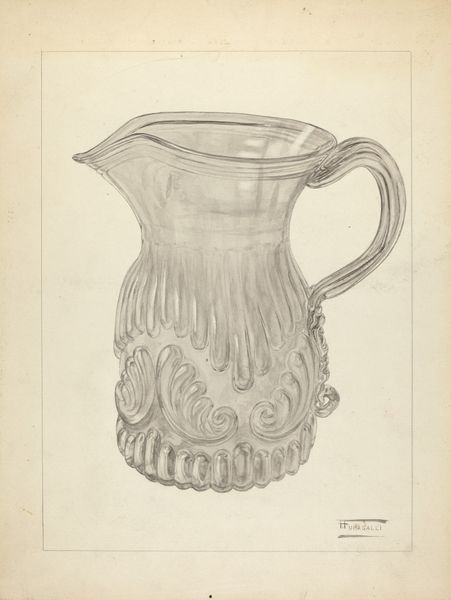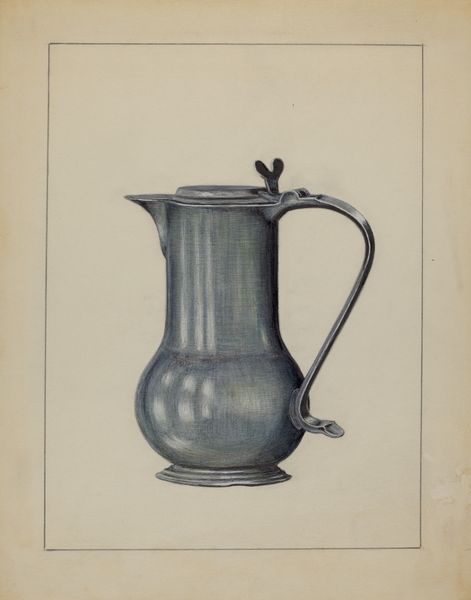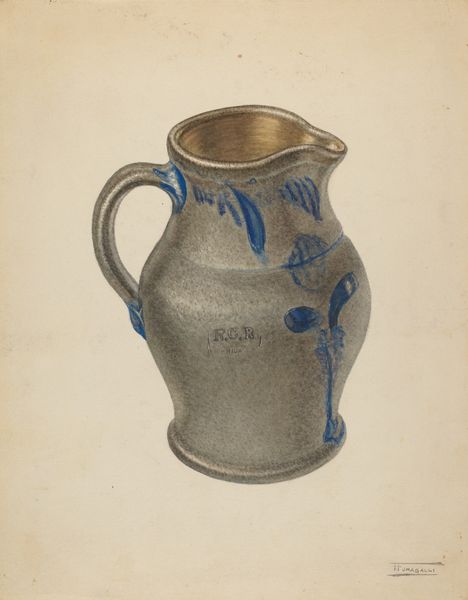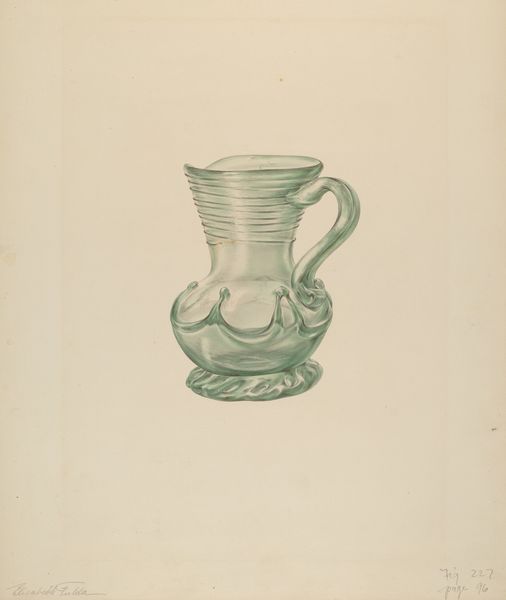
drawing, pencil
#
drawing
#
charcoal drawing
#
pencil drawing
#
pencil
#
realism
Dimensions: overall: 36.7 x 29.1 cm (14 7/16 x 11 7/16 in.)
Copyright: National Gallery of Art: CC0 1.0
Curator: This subtle, luminous drawing from around 1940 is simply titled "Pitcher." It's rendered in pencil and charcoal by an artist named John Dana. What strikes you about it? Editor: There’s a quietness to it, isn’t there? A kind of stillness that feels… domestic. The detail in the glasswork makes me think of pressed glass, something almost fragile despite its robust form. The shading suggests light catching all the facets of the pattern. It speaks of simpler times perhaps, even a little nostalgic, the sort of object you'd find in your grandmother’s cupboard. Curator: Absolutely. Glass pitchers like these are so loaded with connotations, aren’t they? They appear frequently in Dutch still life paintings and in early American domestic scenes, embodying purity, plenty, domestic harmony and serving as a vehicle for symbolic storytelling within social rituals like sharing wine or water at meals, echoing themes of conviviality or perhaps even veiled biblical references. Editor: It’s interesting that you mention early American imagery. The realism here gives it almost a documentary feel. Consider how many depictions of glassware throughout art history come loaded with a demonstration of painterly prowess – reflections and transparency. But here the medium itself lends itself more to the practical object. The precision here has me wondering about Dana's intentions or circumstances at the time; a study of form, a commissioned work? It could tell us a lot about class, and labor, and domestic expectations. Curator: Precisely, the artist chose realism. It’s a testament to the everyday rituals centered around vessels like this pitcher. It might offer psychological insight to understand the act of pouring as something linked to sustenance, nurturance, but even acts of ritual cleansing through ceremonial use in the everyday and in baptism, it may have held personal symbolism, representing the giving of oneself or the sharing of life's essence. It's a container but also a conveyor. Editor: It does force us to consider what the pitcher *held.* Or could hold. And who it served. Water, perhaps, in a moment of necessity. Or something much more symbolically charged. Curator: Indeed. While appearing rather plain and simple, Dana’s rendering invites deeper consideration into this object as both commonplace and culturally charged. Editor: An eloquent testimony to the art historical weight held even by the simplest of subjects.
Comments
No comments
Be the first to comment and join the conversation on the ultimate creative platform.
